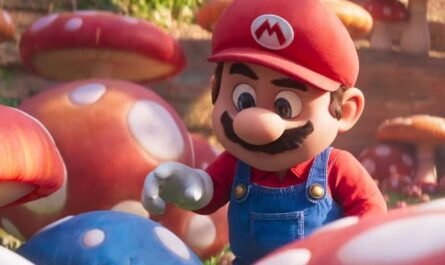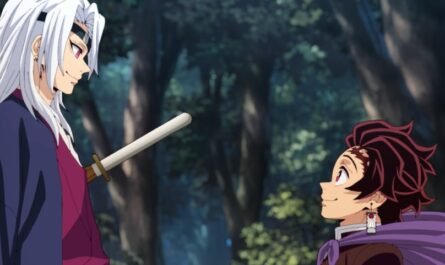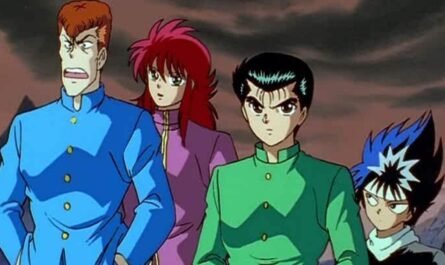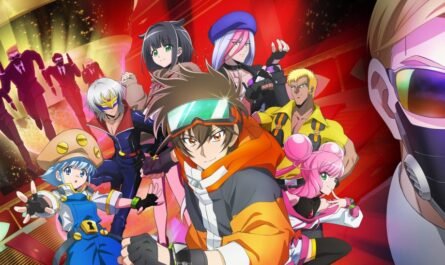The theatrical version of “G Reconguista in G” (abbreviated as “G Reco”), written, written, and directed by Yoshiyuki Tomino, has been completed.
All 26 episodes of the TV anime broadcasted in 2016 have been reorganized into a total of 5 parts, and the final two parts of the climax, “IV: Love Screaming in a Fierce Battle” and “V: Beyond the Line of Death,” will be released at once.
I contributed to the commentaries for each volume of the Blu-ray software’s TV version. I was also in charge of the interview with Director Yoshiyuki Tomino at the end, so I felt like it was over and let my guard down. However, in this continuous release, I realized I didn’t know anything about it.
The title “Reconguista” appears in the main story in the final two parts. However, I also wanted to learn about the “Reconquista,” on which it was based, the reconquest of the Iberian Peninsula that spanned from the 8th century to the 800th century. In other words, he made me think it is essential to ask yourself questions when stimulated and actively research and think about them.
This may be the true intention of Director Tomino when he said, “It’s aimed at children.” Originally, director Tomino wrote the script for all the TV episodes, so the contents of the work did not change much, even in the theatrical adaptation.
The explanations have been carefully written with dialogue, the character descriptions and narratives have been changed, centering on the main characters, Bellri and Aida, and the battle scenes have been revamped to the extreme, but that doesn’t seem to be the reason for the change in impression. After all, the big thing is “changes in the world.” I feel that my feelings as a recipient have entirely changed.
The transition period from television to theater, especially after 2020, is the impact of multiple global quakes. Infection avoidance measures against the COVID-19 virus pandemic have taken away “closeness,” and the division between individuals has appeared.
It has come to light that the foundation of the world is made up of “human touch, sharing of air” everywhere. Tomino As usual in anime, “G Reco” pays close attention to the characters’ physicality.
In the movie version, there are conspicuous touch depictions such as putting hands on the shoulders and hugging, so there was a change that could not be completely reversed. At the same time, a question arose as to whether it was okay to focus on online communication only for the necessary parts. I had taken it for granted that there would be upward growth and evolution, but there is a strong recognition that regression is also possible.
There is no guarantee that the deadly virus mutation will not occur in the future. But, as depicted in Sakyo Komatsu’s “Resurrection Day,” the danger of destroying all humankind has come to exist latently.
This also evokes part of the world view presented by “G Reco.” Throughout the work, it is implied that some disaster overcame the danger of the extinction of all humankind. Although nature has finally recovered to some extent, the ranchman of the Kuntara race, which was the target of cannibalism (cannibalism), will not disappear.
This is the premise of the fierce battle between Captain Mask and Berlin, which remains until the final phase, or the “death line” that must be crossed. Unfortunately, this meaning also looked different from TV time.
This is a noticeable leap forward, but I think, for example, “What if the corona crisis had the effect of sorting by DNA?” Currently, COVID-19 crosses national borders and affects all human beings equally, and vaccines are effective under international cooperation.
In that sense, it was reconfirmed that humans have almost identical DNA regardless of appearance. But, on the other hand, what happens when this starts to work unequally? For example, what would happen if we could selectively create vaccines and specific medicines? The Kuntala case evokes such a thought experiment.
The other is that the possibility of a “world war” has skyrocketed. The situation of Russia’s military aggression against Ukraine appears on the news more frequently than ever before, and it is transmitted as a familiar problem to people living in Japan. It was made clear that if the system of unity and cooperation shown in the fight against the virus was a positive image of humanity, and there would also be a negative image.
What comes to mind here is a passage from the album “REVERBERATION in GUNDAM” (Teichiku Entertainment), released in 1999 to commemorate the 20th anniversary of Gundam.
“Prologue – From History”
Script: Rin Iogi Composition: Daisuke Inoue Narration: Shuichi Ikeda
At the beginning of the Universal Century, the Earth Federation government and one of the space colonies, the Principality of Zeon, fought a war.
The history of the war on Earth was repeated in space.
The man followed his wisdom to his instincts, and even though he knew his foothold was dying, he celebrated his existence.
It’s self-evident that if you play with a tool that’s taller than you are, you’ll destroy yourself. Thinking it can be controlled is an ego boost. A proliferation of arrogance! Fireworks of the stupid! Believe that huge tools are symbols of the times! (Quoted from the same manual)
“REVERBERATION” means “reverberation.” In typical reverberation, the amplitude energy decays and disappears, but “war” differs. As the phrase “history repeats itself” suggests, the seemingly attenuated energy creates distortion, and pressure builds up to become a “new war” someday and blow fire.
The “Reconquista” is an excellent example of such a movement. This “dialogue script” condenses Yoshiyuki Tomino’s (Rin Iogi) historical awareness. He reasoned that he also led the foresight in “G Reco.”
At the time of Gundam’s 20th anniversary, Hikawa thought, “Gundam should have been a work that denied the confirmation of the status quo and gave many hints to reconsider, but before I knew it, it had become a toy…”. She was astonished to hear those words. Now, more than 20 years after that, I found this memory-stimulating depiction throughout the final two parts of the theatrical version of “G-Reco,” and I couldn’t help but lean forward.
There are other reasons. Alongside the fact that I heard vague words like “change the status quo by force” daily, I was apprehensive about the “history of tokusatsu” lectures I was giving at university. Some college students take “no war” as absolute. Of course, it’s a “good thing,” but the concept doesn’t have a “basis.” It lacks a multifaceted perspective.
For example, in the 1942 movie “The Battle of Malaya, Hawaii,” in which Eiji Tsuburaya demonstrated his special effects. While reserving the pros and cons of its role then, I introduced it as one of the cornerstones of history, a must to talk about Japanese special effects. However, I received multiple questions asking, “Did Eiji Tsuburaya have any hesitation in cooperating in the war?”
It is not known how enthusiastic the Japanese people were at the results of the first war when the war began. Therefore, only one side is emphasized: the poverty just before the war’s end, the massive air raids, and the tragedy of the atomic bomb, which were brought about by that enthusiasm.
The relative education that understands the “enthusiasm” of “fireworks fired by stupid people” (quoted above) as a set seems to be weakening for some reason among those who experienced the war.
Furthermore, in 1960, when he introduced the war movie “Hawaii Midway Great Sea Air Battle Pacific Storm,” which had elements of a remake of the same work, he said, “Japan, which made movies depicting war, did not receive international criticism. Are you?” was asked.
This work was the opportunity to construct the famous infrastructure “Big Pool” because special effects director Eiji Tsuburaya and Toho’s special technology department regularly make war movies. More than ten years have passed since the end of World War II, and there is an international movement worldwide to summarize “what was that war?” through novels, criticism, and movies. That is why “war movies” were made worldwide and multifaceted verifications were conducted.
The one-sided, thin anti-war sentiment imprinted on someone’s mind will sooner or later be easily overthrown. War has both enthusiasm and aesthetics, and everyone has a fighting instinct and a desire for control that cannot be extinguished (if you look at SNS, you will understand it well). It’s just controlled by reason. However, human behavior in a situation dominated by individual and collective consciousness can become the opposite of this control. If you entirely deny war and keep it away from it, you will lose the opportunity to learn, and instead, it will come closer. He said this when he directed Sunao Katabuchi’s “In This Corner of the World.”
If you don’t input cases from multiple perspectives, grasp the actual situation and think for yourself, model what to do if it happens, imagine both sides of the problem, and control it with reason, the theme of the theory of emotions is “war.” There is a limit to just “against.” In the final stage of “G Reco,” the conflict between multiple factions and the activities of different elements within the section are mixed up and chaotic. It’s like a trade show of “human behavior” in wartime, such as rushing to get credit, mixing personal feelings, trying to outsmart and being outsmarted, and deciding who to beat next. Even the most ridiculous and improbable things happen in extreme situations. At the same time, because it is an extreme situation, the good side of people who are worthy of trust also shines.
I was born in 1958 and was a TV kid, but somehow I was convinced that the war was “finished” and “distant.” However, I couldn’t help but touch on the “various faces of war” summarized by the “war record boom” that expanded to boys’ manga magazines.
Through weapons that have been turned into toys, mainly plastic models, he could simulate the technical aesthetics of war tools and the terror they used to control others. It must have been the “reverberation” of World War II. In that case, 1974’s “Space Battleship Yamato” and 1979’s “Mobile Suit Gundam” can be positioned as “secondary reverberations.”
Please forgive me for being a rough and immature argument because I wrote it on the spur of the moment. However, as someone who grew up in an era when many parents, relatives, and teachers experienced the war (my grandfather died in the war and wasn’t there when Hikawa was born), I felt the need to write it down as I thought.
If you feel stuck, why don’t you watch the movie version of “G Reco” with the previous “Prologue – From History” input in your mind and imagine various things from there? Some honorifics omitted)











